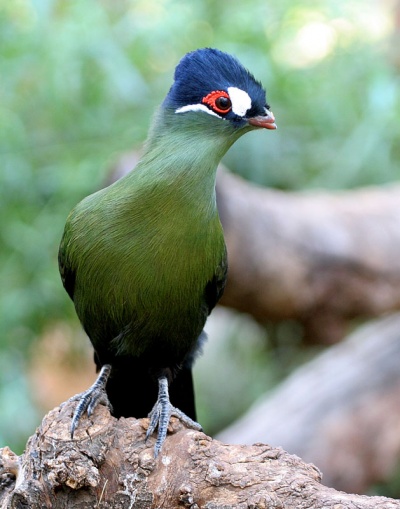
Tauraco hartlaubi
SUBFAMILY
Musophaginae
TAXONOMY
Corythaix hartlaubi Fischer and Reichenow, 1884, Mt. Meru,
northern Tanzania. Monotypic.
OTHER COMMON NAMES
English: Blue-crested plantain-eater, black-crested turaco;
French: Touraco de Hartlaub; German: Seidenturako; Spanish:
Turaco de Hartlaub.
PHYSICAL CHARACTERISTICS
16–17 in (40–44 cm); 6.9–9.7 oz (195–275 g). A dark iridescent
green turaco with brilliant red primaries conspicuous in flight.
Rounded bushy crest and nape glossy blue-black; chin, cheeks,
neck, mantle, throat, and breast dark green; lower back, folded
wings, and tail deep violet blue; thighs and belly dull blackish
washed with green. Prominent white patch in front of the eye
separated from a white line extending from gape to ear coverts
by a black loral patch and narrow black line immediately below
the eye. Orbital ring and bare skin behind the eye red. Juveniles
similar to adults but duller and with less red in primaries.
DISTRIBUTION
An East African endemic centered around the Kenyan Highlands,
extending into north Tanzania at Loliondo, Longido,
mounts Meru and Kilimanjaro, the Pares and West Usambara
mountains. It reaches east Uganda at mounts Elgon, Moroto,
and Morongole.
HABITAT
Evergreen montane forests between 4,550 and 10,500 ft
(1,400–3,250 m), as well as in well-timbered suburban parks
and gardens around Nairobi and other central Kenyan towns.
BEHAVIOR
Typically in pairs or family groups, congregating in groups of
up to 20 individuals at favored fruiting trees. In many areas
pairs defend a core territory year round, and each day work a
well-defined feeding route within territorial boundaries. Flight
appears weak and labored with much flapping and gliding, and
generally for only short distances. Courtship displays by the
male are noisy and involve much fanning and jerking of the
tail, raising and lowering of the crest, and half opening of the
wings to display crimson flight feathers. Once the pair bond is
established, the pair engages in frequent bill rubbing, and the
male offers food to the female at frequent intervals.
FEEDING ECOLOGY AND DIET
Primarily eats fruits and berries, but will also consume flowers,
caterpillars, moths, and beetles. Appears particularly attracted
to black or dark red fruits, and captive birds readily devour
black grapes.
REPRODUCTIVE BIOLOGY
Two rounded dull white eggs are laid in a shallow platform of
loosely interlaced twigs, some 7–25 ft (2.5–8 m) above ground,
and generally among thick tree foliage. Incubation is by both
sexes for 22–23 days. Newly hatched chicks are covered in
black down, and for the first few days are fed on regurgitated
caterpillars and fruit pulp. At 17–18 days the nestlings are able
to climb all over the nest tree, rarely being in the nest itself,
and are able to make their first flight at around 28 days.
CONSERVATION STATUS
Although fairly common in Kenya, the northern Tanzanian
population has been seriously impacted by years of indiscriminate
trapping and export, resulting in high mortality and diminishing
populations in several areas. Tanzania has been the
sole exporter of wild-caught birds, and despite annual quotas of
200 birds, this has been disregarded for many years.
SIGNIFICANCE TO HUMANS
A popular cage bird with large numbers in zoos and aviaries in
the United Kingdom, Europe, North America, Mexico, and
the Far East, with considerable breeding success, thus reducing
the need for the continued importation of wild birds from
Tanzania.
Photo Gallery of - Hartlaub’s turaco
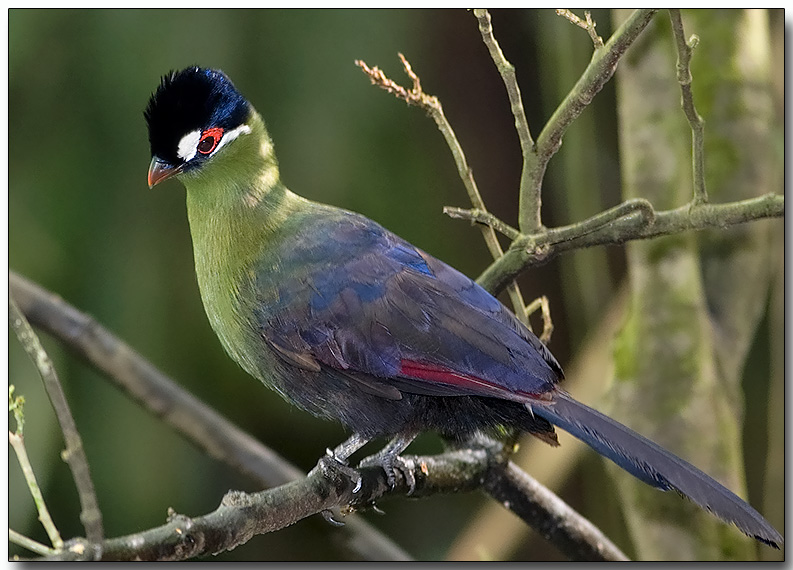
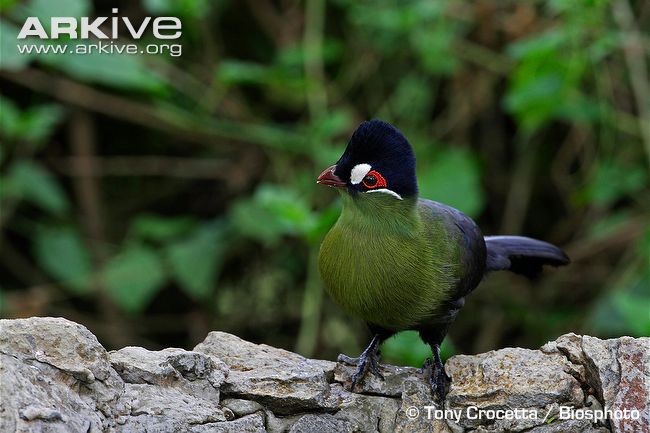
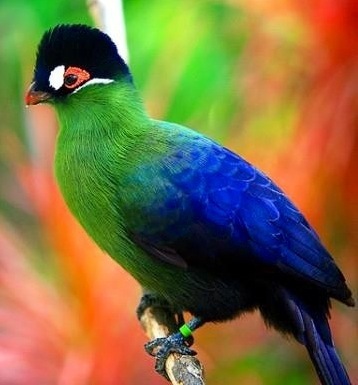
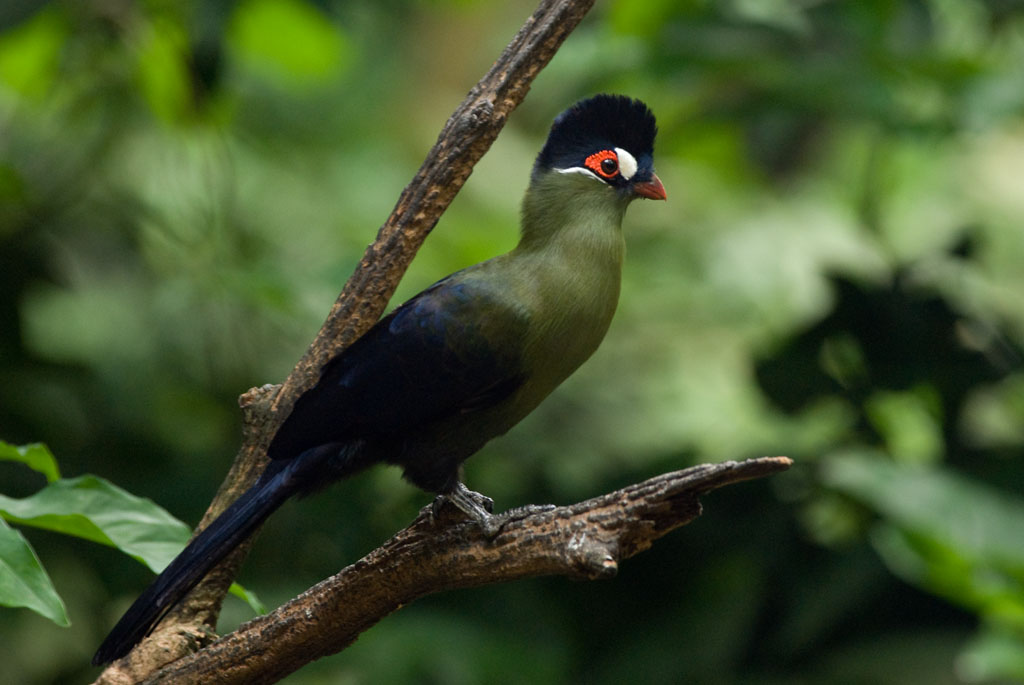
 Animalia Life
Animalia Life